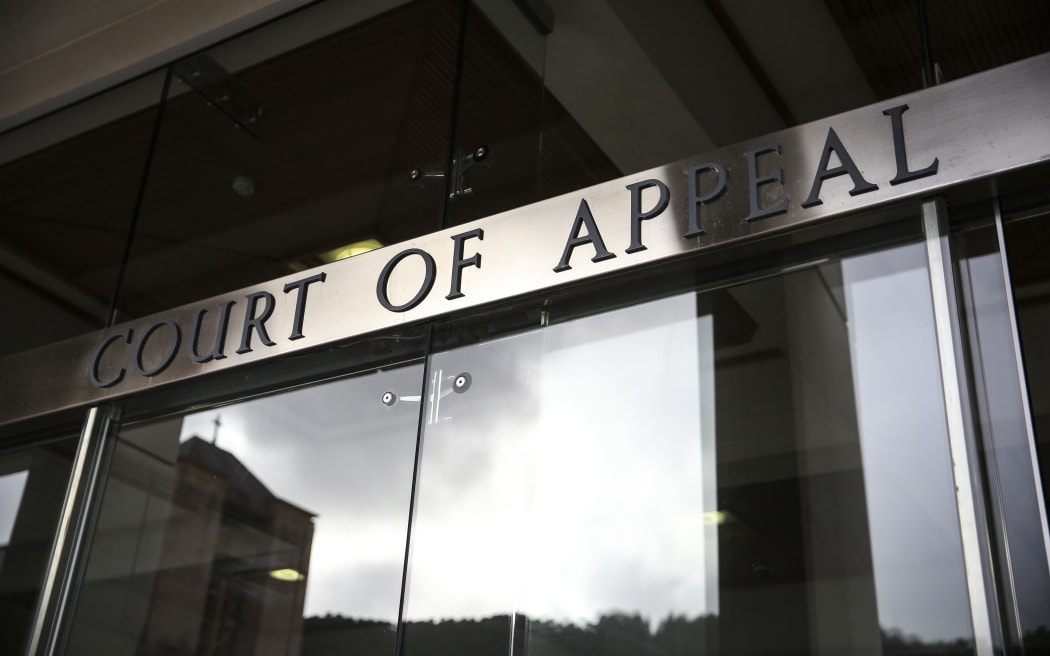
The Court of Appeal found there was no lawful reason to take Mahia Tameifuna's picture as officers were not gathering evidence about his offending Photo: RNZ / Rebekah Parsons-King
The Court of Appeal has found an officer illegally photographed a man during a random traffic stop, amounting to a breach of the Bill of Rights.
Mahia Tameifuna was convicted of one charge of aggravated robbery for offending that happened with an associate on 2 November 2019.
A few days later he was in a car which was randomly stopped by police where his photo was taken.
The court found there was no lawful reason to take Tameifuna's picture as officers were not gathering evidence about his offending.
But despite that, it allowed the picture to be used as evidence to identify Tameifuna in his subsequent trial for robbery.
It said the police impropriety was not done in bad faith, and that evidence was real and important and led to Tameifuna's conviction for a serious offence.
Meanwhile, the court dismissed Tameifuna's appeal against the conviction, but set aside the three-strikes portion of his sentence and has allowed more time for a general sentence appeal.
Tameifuna was sentenced in October 2021 to four years and 11 months' prison with no parole.
Tameifuna's picture taken unlawfully and for no good law enforcement reason
During the police's investigation of the aggravated robbery they identified Tameifuna by cross referencing CCTV footage with pictures taken a few days after the robbery during a random traffic stop.
Tameifuna was in the car - which fitted the description of a vehicle the police believed was associated with the robbery - when it was pulled over in the early hours of 5 November.
Police found that the driver of the vehicle was unlicensed, its occupants all had convictions for property offending, and there was also "suspicious" property in the car.
The car was impounded and as the car's occupants were gathering their belongings on the roadside, the police took photographs including of Tameifuna.
The High Court earlier found that when doing so, the police were not gathering evidence in relation to alleged offending by Tameifuna.
The Court of Appeal held that it was unlawful for police to take and retain photographs of members of the public for the purposes of identification when doing so was not linked to a specific investigation.
It said that in Tameifuna's case police did not act with "legal authorisation" when officers photographed him, and there was also no good law enforcement reason for the taking and keeping of the picture.
It said it amounted to a breach of Tameifuna's right to be secure against unreasonable search and seizure under the Bill of Rights.
It said Tameifuna had a reasonable expectation of privacy in the circumstances.
He was compelled by circumstances to leave the vehicle and his photograph was taken simply on the basis that it might be useful in the future.
The police were not at the time investigating the possibility he had committed any particular offence.
It said there was a reasonable expectation that a person's photograph would not be deliberately taken and retained for identification purposes by police without a good law enforcement reason.
The court said the intrusion on Tameifuna's privacy was "relatively modest".
But it said the decisive point was that in this circumstance police made no attempt to show the picture was taken as part of an ongoing inquiry, or retained for any other lawful purpose.
Despite breach, the photograph still allowed as evidence
Despite the problems with the picture the court found it still could be used as evidence against Tameifuna.
It said although the right breached was an important one, the intrusion was not very serious.
The police's impropriety was not deliberate, reckless or done in bad faith (although a different conclusion could be reached if the police continue to unlawfully photograph people), it said.
It found the evidence was real, important, and led to Tameifuna's conviction for a serious offence.
Another reason to allow the picture to be used as evidence was to support the need for an effective and credible justice system.
The court upheld Tameifuna's conviction.
It also found there was no error in sentencing, apart from the non-parole period imposed by the triggering of the three strikes law.
The court found the non-parole period imposed by the triggering of the three strikes law led to a disproportionately severe sentence.
It was tripling the time he would have to spend behind bars if not for the provision.
The court set aside the three-strikes portion of his sentence and has allowed more time for a general sentence appeal.


